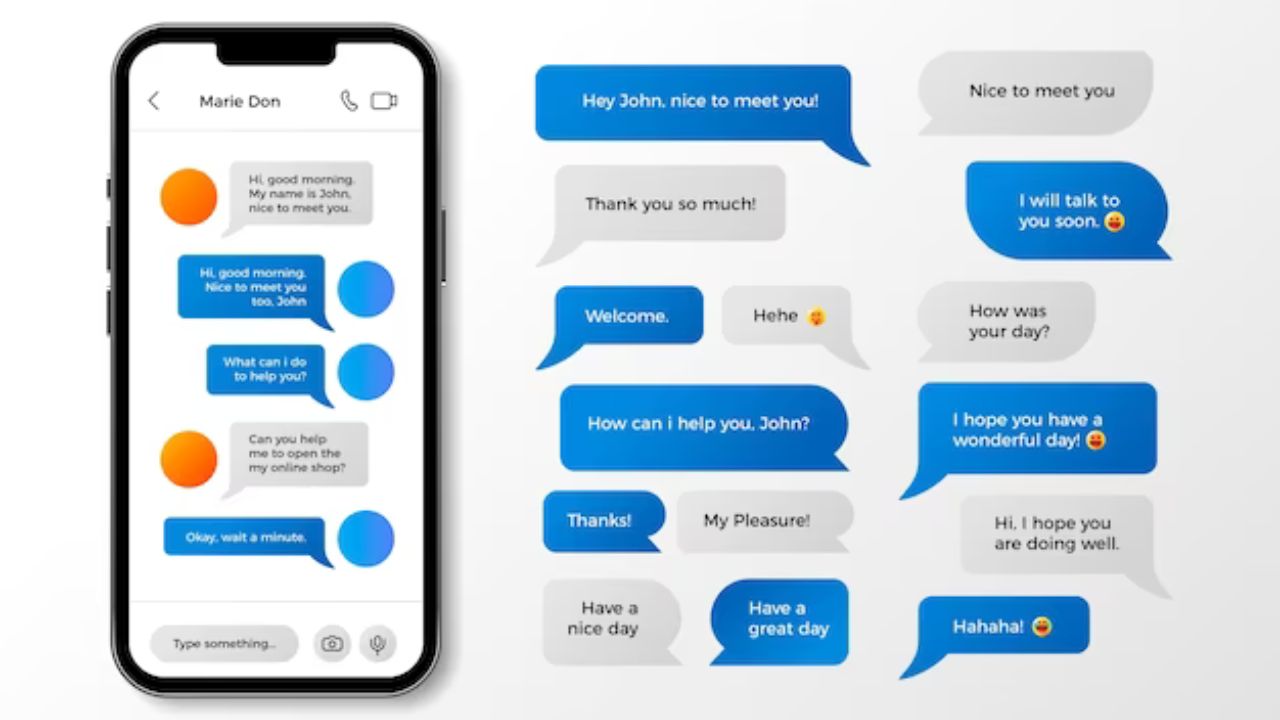TECHNOLOGY
Breaking Language Barriers: The Power of Video Translation in Global Communication

When globalization knocks on every door, and digital content crosses every border, embracing diverse languages becomes pivotal for communication. In this digital era, businesses and content creators seek to transcend geographic and linguistic boundaries, driving the need for technology that seamlessly integrates languages. One such innovation is a video translator, an essential tool for demolishing language barriers and facilitating global understanding. This remarkable technology has carved out a space where language no longer segments audiences, enabling messages to resonate across different cultures.
Translation has existed in various forms, but modern video translation, powered by artificial intelligence, stands out for its speed and efficiency. This evolution has opened up new avenues for creators to reach a wider audience, making content more accessible to people of varied linguistic backgrounds. Consequently, international media, educational materials, and online content have all seen increased consumption, thanks to the ability of video translation to render language differences inconsequential.
Key Takeaways
- Video translation tools are pivotal in bridging the communication gap across diverse languages.
- Technological advancements have markedly improved the accessibility and effectiveness of video translation.
- High translation accuracy is essential for preserving the integrity and intent of the original message.
- Multilingual video content expands audience reach and enhances viewer engagement and satisfaction.
The Evolution of Video Translation
The terrain of video translation has witnessed a rapid transformation. In the past, translating video content would often involve lengthy processes of dubbing and manual subtitling, which at times led to the loss of the original flavor of the content. Today, sophisticated algorithms and AI-driven technologies have emerged, simplifying these processes. The emotional impact and context of the original content are preserved in the translation that viewers see thanks to these new technologies ability to pick up on subtleties and cultural inflections. This progress has made content more inclusive and helped creators, educators, and entertainers reach broader demographics.
How Video Translation Works
The workings of video translation are rooted in a synergy between technology and human expertise. Automated speech recognition software initially transcribes and segments the audio into manageable text. Following transcription, robust translation engines interpret the dialogue and generate corresponding subtitles in the target language. Despite these technological strides, video translator are crucial in refining and delivering accurate translations. They ensure that idiomatic expressions, humor, and local references are appropriately adapted, maintaining the content’s original charm and intent.
The Importance of Accurate Translation
Translation accuracy extends beyond linguistic correctness; it involves deeply understanding cultural contexts. The translation plays a delicate role in transporting the words and their sentiments. One misplaced word or misunderstood phrase could alter the intended meaning, leading to adverse effects or distorting the creator’s voice. Therefore, translators are responsible for delivering a translation that stays truthful to the heart of the content. Maintaining the delicate balance between staying true to the original and engaging a new audience is at the core of video translation’s integrity.
Benefits of Multilingual Video Content
Embracing multilingualism in video content is a strategic move that comes with a multitude of advantages. Data has consistently shown that videos available in multiple languages experience a surge in viewer engagement and satisfaction. By catering to a global audience, content creators unlock new markets and demographic segments, leading to growth and more significant cultural impact. In a world where customer experience is king, providing content in one’s native language is a compelling way to resonate with and retain viewers, solidifying brand loyalty and creating potent customer relations.
Emerging Technologies in Video Translation
Emerging technologies are rapidly redefining the landscape of video translation. Artificial intelligence is at the forefront, with developments that promise even greater accuracy and turnaround times. As these technologies grow more sophisticated, we may soon witness real-time translations that allow viewers to understand any video content instantly, regardless of the original language. The potential for such advancements to shape how we engage with the world around us is both vast and exhilarating, promising a future where language differences are simply an afterthought.
Overcoming Cultural Barriers Through Translation
Effective video translation does more than enable comprehension—it opens doors to cultural exchange. Quality translation helps content to resonate with audiences on a deeper, more personal level. It allows for celebrating diversity as viewers savor the rich tapestry of global storytelling. The process is complex and requires translators to maintain a delicate balance, invariably becoming cultural ambassadors whose choices can significantly affect an audience’s understanding and appreciation of foreign media.
The Ethics of Video Translation
As the technological horizon expands, ethical considerations in video translation sharpen. The dilemma between authentic representation and adaptation to appeal to different cultures is one that translators tackle daily. Striking the right balance between nuanced localization and maintaining the content creator’s vision is an intricate dance that demands a rigorous ethical framework. It’s about respecting copyright, valuing creative integrity, and considering the implications of automation in translation practices. The duty of a translator becomes two-fold: to echo the original narrative while making it accessible to a new audience.
In wrapping up, the transformative caliber of video translation bears significant implications for international dialogue and connectivity. It stands as a testament to human innovation, a beacon guiding us toward a world where language inclusivity is not just an aspiration but a reality. This technology ushers us into a new era of global communication, underpinning the unification of different peoples by sharing stories, knowledge, and experiences.
TECHNOLOGY
Fostering Collaborative Workspaces with Secure Access Service Edge (SASE)

Key Takeaways:
- Explores how Secure Access Service Edge (SASE) frameworks facilitate safer, more collaborative work environments.
- Emphasizes the role of SASE in supporting remote work and distributed teams.
- Outlines the security benefits and operational efficiencies gained through SASE adoption.
- Highlights the future scalability and adaptability of enterprises using SASE.
- Details real-life scenarios and case studies of SASE implementation.
The Rise of Collaborative Technologies in a Digital Workplace
With the advent of remote work and the globalization of business, collaborative technologies have surged in popularity. Teams worldwide rely on real-time data sharing, video conferencing, project management software, and instant messaging platforms to stay connected and productive. As the corporate ecosystem becomes increasingly reliant on these tools, there’s an unparalleled necessity for robust cybersecurity measures to protect sensitive information. The Secure Access Service Edge concept, commonly referred to by its acronym, SASE, offers a promising solution to this modern challenge. Suppose one is curious about the SASE meaning. In that case, it can be understood as an emerging framework combining network security functions with wide-area networking capabilities designed to support contemporary digital workplaces’ fluid and dynamic nature.
Understanding the SASE Framework
At its core, the SASE framework signifies a transformative step in how businesses manage their networks and cybersecurity. This innovative architecture melds essential network security functions, including advanced threat prevention, sandboxing, data loss prevention, and others, with WAN capabilities to create a seamless, secure network fabric that extends across the entire business infrastructure. In simple terms, SASE brings security to the edge, which is the closest point to users, devices, and applications. Thereby, it enhances performance and user experience by eliminating the bottlenecks often seen in traditional data-center-oriented networking models.
Benefits of SASE in Modern Enterprises
The integration of SASE enables organizations to reap extensive benefits. One of the most evident is the elevated security stance it delivers. By unifying advanced threat prevention, identity management, and compliance policies in a single framework, enterprises can defend against a sophisticated array of cyber threats more effectively. Moreover, SASE’s cloud-native, scalable solutions grant businesses the flexibility to grow without the additional complexity or cost of scaling traditional hardware-based appliances. Meanwhile, IT departments benefit from the simplified management and unified policy enforcement that a SASE model brings, freeing up valuable resources to focus on other strategic business objectives.
Ensuring Seamless Security Across All Touchpoints
SASE’s ability to provide comprehensive, end-to-end security coverage is especially pivotal in a business landscape where operations often span numerous platforms and devices. Across corporate networks, BYOD (Bring Your Device) policies, edge computing devices, and cloud-based services, SASE maintains a robust security posture. This uniform layer of protection is critical for safeguarding against data breaches and unauthorized access, which can be particularly damaging when collaborating across disparate and potentially unsecured channels.
The Role of SASE in Remote Work and Cloud Security
In an era marked by a significant shift to remote work, the benefits offered by SASE frameworks have grown in relevance and necessity. The transition to predominantly cloud-based resources has required a change in how security is approached, with traditional perimeter-based strategies no longer being sufficient. SASE’s unique capability to provide dynamic, context-aware security policy applications ensures that remote workers can safely access the corporate network and cloud services anywhere in the world without compromising security. The stringent security measures and the sophisticated, user-centric policies intrinsic to SASE architectures provide the foundation for protecting organizations’ vital assets and data.
Unified Communication and Collaboration
SASE integrates with unified communication and collaboration (UCC) platforms to facilitate seamless communication and collaboration among remote teams. Whether employees use video conferencing, instant messaging, or file-sharing tools, SASE ensures that communications are encrypted and protected from eavesdropping and interception. It enables teams to collaborate effectively, regardless of geographical location or network conditions.
Data Loss Prevention
Protecting sensitive data is paramount in collaborative workspaces, where employees regularly share and collaborate on confidential information. SASE helps organizations implement robust data loss prevention (DLP) policies to prevent unauthorized access, sharing, or leakage of sensitive data. By inspecting and filtering network traffic in real-time, SASE identifies and blocks potential security threats, such as malware or insider threats, before they can compromise sensitive information.
Compliance and Regulatory Requirements
Collaborative workspaces often handle sensitive information subject to regulatory compliance requirements, such as GDPR, HIPAA, or PCI DSS. SASE helps organizations meet these compliance requirements by enforcing security policies and controls to protect sensitive data. By providing comprehensive visibility and audit trails of user activities and data access, SASE enables organizations to demonstrate compliance with regulatory standards and industry best practices.
Case Studies: Successful SASE Deployments
Case studies from diverse industries present tangible evidence of how SASE transforms business operations and security strategies. Companies implementing SASE solutions often report significant improvements in security efficacy, operational agility, and cost management. By replacing a patchwork of point solutions with a cohesive SASE strategy, businesses are finding that they can reduce complexity and costs, respond more quickly to security threats, and improve overall business resilience.
Future-Proofing Your Business with SASE
For businesses considering long-term strategic investments, emphasizing agility and scalability is critical. Adopting SASE can act as a springboard for future innovation and growth. As the corporate landscape evolves with technological advancements, so do the challenges, particularly in cybersecurity. SASE is positioned as a forward-thinking solution that aligns with future trends, including the Internet of Things (IoT), 5G networks, and the increasing reliance on the edge. By embracing SASE, enterprises can ensure they meet the demands of today’s digital world and are well-prepared to adapt to future changes.
TECHNOLOGY
The Vital Role of HCC Risk Adjustment Coding in Optimizing Healthcare Outcomes

Table of Contents
- The Fundamentals of HCC Risk Adjustment Coding
- Enhancing Patient Care Through Accurate HCC Coding
- Financial Implications of HCC Coding for Healthcare Providers
- Data-Driven Decisions: How HCC Coding Influences Healthcare Strategies
- Training and Education: Equipping Coders for Excellence in HCC Coding
- Looking Ahead: The Future of HCC Coding in Healthcare Innovation
Healthcare institutions worldwide are grappling with the challenge of providing high-quality patient care while managing finances efficiently. They have turned to the Hierarchical Condition Category (HCC) risk adjustment coding methodology to tackle this hurdle. This systematic approach analyzes patients’ diagnoses and conditions to predict healthcare costs accurately. The HCC risk adjustment coding is critical in creating personalized care plans for each patient and ensuring healthcare providers receive proper reimbursement. The HCC system’s importance lies in its ability to achieve positive healthcare outcomes and maintain the financial sustainability of healthcare organizations. By leveraging HCC, healthcare providers can anticipate costs, mitigate risks, and provide patients with the highest quality care.
The Fundamentals of HCC Risk Adjustment Coding
At its essence, HCC risk adjustment coding is utilized to forecast healthcare expenditures by employing a patient-centric focus on their illnesses and ongoing conditions. The Hierarchical Condition Category (HCC) model is a sophisticated healthcare analytics tool that enables healthcare providers and insurance companies to predict patient resource needs and cost of care. The HCC model does this by mapping patients’ health states to specific codes that reflect the nature and severity of their health conditions. This approach enables healthcare providers and insurance companies to develop a comprehensive understanding of patients’ medical needs and allocate resources effectively. The HCC codes are essential in characterizing patients’ health status and provide insurance providers with a framework for allocating funds effectively. The codes reflect the complexity of patients’ conditions, such as chronic conditions, acute illnesses, and comorbidities. It ensures that healthcare providers receive payments that align with the risk they undertake in managing their patient pools.
Enhancing Patient Care Through Accurate HCC Coding
Accurate HCC coding is more than a clerical task—it’s a crucial component of personalized healthcare. When health conditions are coded precisely, healthcare providers can craft and refine treatment approaches based on comprehensive understanding. This leads not only to improved health outcomes but also to a higher standard of patient satisfaction. Accuracy in this coding process means clinicians can trust the reliability of the data, which is indispensable for making informed decisions about patient care.
Financial Implications of HCC Coding for Healthcare Providers
Accurate coding of patient conditions is essential for healthcare providers to receive the appropriate funding needed to manage patient care. Hierarchical Condition Category (HCC) codes reflect the severity and complexity of a patient’s health condition. The more precise the HCC codes, the more accurate the funding allocation, ultimately impacting healthcare institutions’ financial performance. This funding ensures that patients receive the best possible care and that the economic health of the institution is in sync with the physical health of the patients they serve.
In addition, accurate coding reduces the risk of audits and monetary penalties, which can harm healthcare institutions’ operational stability. By maintaining proper coding practices, healthcare providers can build trust among stakeholders in the healthcare industry, including patients, providers, and payers. This trust can improve patient outcomes and long-term financial stability for healthcare institutions.
Data-Driven Decisions: How HCC Coding Influences Healthcare Strategies
Decision-making in healthcare organizations is increasingly data-driven, relying on accurate coding and reporting systems like HCC. This data lays the groundwork for many strategic decisions, from resource allocation to population health management. Insights gained from HCC coding enable healthcare providers to discern patterns in patient outcomes, optimizing care delivery and enhancing preventive health efforts.
Training and Education: Equipping Coders for Excellence in HCC Coding
The healthcare industry uses complex coding systems to navigate patient care and billing. This system can only function effectively with highly skilled professionals specializing in healthcare coding. They translate medical procedures into the correct codes, which is crucial for accurate billing and reimbursement.
Educational initiatives and training programs are necessary to achieve the accuracy required in healthcare coding. These programs equip coders with the skills to interpret medical procedures and translate them into relevant codes accurately. This leads to greater accuracy in HCC coding and reduces the risks of misrepresentation and fraud.
Apart from benefiting patients and the healthcare industry, education also benefits the coders themselves. By improving their skills and knowledge, coders can advance in their careers and take on more challenging roles within the industry. Ultimately, investing in the education of coding personnel strengthens the backbone of healthcare data integrity. It ensures that the industry continues to provide high-quality care to patients.
Looking Ahead: The Future of HCC Coding in Healthcare Innovation
As the healthcare industry progresses, new and innovative technologies and methodologies are continually being introduced. The field of HCC coding is no exception. With the advent of artificial intelligence, machine learning, and advanced data analytics, the future of HCC coding is poised to undergo a significant evolution. These cutting-edge technologies offer faster, more precise, and increasingly sophisticated coding practices that can significantly improve the quality of patient care. By adopting and integrating these advancements into their operations, healthcare providers can streamline their administrative processes and enormously impact the standard of care delivered to their patients. The future of HCC coding is bright, and healthcare providers that embrace these innovations are poised for success.
TECHNOLOGY
The Smart Buyer’s Guide to Acquiring Heavy Equipment at Auctions

Key Takeaways:
- Understanding the auction landscape can dramatically influence your investment in heavy equipment.
- Preparation is essential; knowing the equipment’s value, condition, and operational history will inform smart bidding.
- Post-auction considerations like transportation and maintenance are crucial for long-term satisfaction and ROI.
- Real-life success stories offer tactical insights into making the most of heavy equipment auctions.
Navigate heavy equipment auctions like a pro with this comprehensive guide. Learn how to assess equipment conditions, set a budget, and conduct thorough research. Discover strategies for bidding effectively and maximizing value. Understand the importance of inspecting equipment beforehand and identifying potential red flags. Explore reputable auction platforms and ensure secure transactions. With valuable tips and insights, this guide empowers buyers to make informed decisions and acquire heavy equipment confidently. Whether you’re a seasoned buyer or new to auctions, this resource equips you with the knowledge and tools needed to succeed in the competitive world of heavy equipment acquisition.
Understanding the Benefits of Auctions for Heavy Equipment
Heavy equipment auctions have emerged as symbols of diversity and cost-saving opportunities within the market. They provide a platform where construction firms, agricultural enterprises, and other industries can explore a wide range of machinery, often at lower costs than traditional retail channels. These auctions offer a unique opportunity for buyers to access a diverse selection of heavy equipment while potentially enjoying significant savings. Beyond the financial allure, auctions provide a snapshot of the current market landscape, revealing trends in both availability and demand. By providing a large selection of practically new to gently used items, heavy equipment purchases at auctions expedite the procurement process and meet various business demands and budgets.
Pre-Auction Preparation: What You Need to Do
Entering an auction without adequate groundwork is akin to navigating without a compass. Market-savvy bidders commit to researching past auction results, discerning market fluctuations, and extracting predictions for future valuations. The bedrock of this preparation lies in understanding the value of the heavy equipment on offer. Resources like the Kelly Blue Book’s guide on Heavy Equipment Pricing are instrumental in equipping buyers with what price tag a piece of equipment should rightfully bear. In parallel, conducting a self-audit of equipment needs against performance specifications ensures that the auction experience aligns with business objectives. Financial foresight extends beyond the initial purchase price, enveloping potential repair costs, transportation, and operational expenses into a holistic budget.
Navigating Online Auctions: Strategies for Success
The proliferation of online auctions offers unparalleled convenience, allowing buyers to scout for equipment across geographic boundaries. The digital format, however, demands proficiency with the platform’s tools and protocols; understanding the fine print of online deals is non-negotiable. Thriving in the online auction space entails a vigilant approach to bid tracking, insightful analysis of item descriptions, and a proactive stance on seeking additional information. This could involve liaising with auction houses for detailed reports or requesting virtual tours to assess the machinery’s condition better.
Inspection Tips: Ensuring Quality Before Bidding
They are fostering confidence in your auction purchase pivots on comprehensive inspections. The tactile examination of the equipment, the scouring for operational red flags, and the appraisal against industry benchmarks delineate a prudent bid from a haphazard gamble. Even in the case of online auctions where physical scrutiny is less accessible, requesting comprehensive photographs, service histories, and seller disclosures can mitigate uncertainties. For instances necessitating expertise beyond one’s purview, professional inspectors step into the frame as the guardians of one’s investment, applying their seasoned eyes to ensure that the lucrative bid does not disguise an amalgam of mechanical woes.
Understanding Auction Terms and Conditions
Every auction house operates under a banner of distinct terms and conditions that dictate the transaction’s rhythm. Mastery of these rules — from payment deadlines to buyers’ premiums — becomes a bidder’s passport to avoid potential transactional turbulence. The minutiae of ‘as-is’ clauses and warranty stipulations weave a legal fabric that might protect or punish the unwitting buyer. Imbued with this knowledge, informed participants are better equipped to navigate the procedural maze of an auction, ensuring transactions culminate in satisfaction rather than unexpected liability.
Bidding Strategies: When to Play and When to Stay
The throes of a live auction can evoke a heady mix of adrenaline and competition. In this environment, seasoned bidders deploy discernment, resisting the siren calls of emotional bidding wars. Erecting rigid parameters for maximum bids erects safeguards against over-expenditure, anchoring decisions in logic rather than the heat of the moment. Understanding when the competition has exceeded the bounds of financial prudence marks the expert bidder, who knows the power of a strategic withdrawal in the face of escalating prices.
After the Auction: Managing Transportation and Logistics
The gavel’s final bang heralds the onset of logistical maneuvering. Transporting large-scale equipment demands equal parts logistical prowess and diligent planning. Knowledge of the dismantling, loading, routing, and final delivery imbues the buyer with control over the transit destiny of their newly acquired assets. The collective accounting for these factors in the pre-auction budget averts the sting of unforeseen expenses, solidifying a triumph at auction into concrete success upon delivery.
Maintenance and Upkeep for Auction-Bought Equipment
The stewardship of heavy machinery does not pause at procurement; it extends into an ongoing commitment to maintenance. Recognizing the importance of regular servicing, adherence to manufacturer guidelines, and preemptive replacements ensconces the machinery within a protective envelope, staving off depreciation and operational failures. Securing extended service plans, if available, may supplement one’s maintenance regimen, providing a buffer of assurance in the mechanical integrity of the heavy machinery on hand.
Future Resale: Maximizing the Return on Your Investment
Even as one auction concludes, astute buyers approach the eventuality of resale. Forethought in this domain encompasses comprehensive documentation of purchase details, scrupulous maintenance records, and active observation of market tides that influence resale values. Tangential elements, such as the machine’s appearance and traces of diligent upkeep, coax favorable sale conditions, maximizing the potential return on one’s initial auction investment.
Real-Life Buyer Success Stories: Learning from Others
Grounded in the narratives of those who’ve navigated the auction labyrinth successfully are the breadcrumbs of wisdom for future participants. Real-life anecdotes encapsulate a reservoir of tactics, the cautionary tales warding against common missteps and the triumphant strategies revealing pathways to a prosperous bid. Engaging with the candid chronicles of industry insiders, like those found on the Machinery Trader blog’s Selling Tips, enhances the bidder’s repertoire of strategies, galvanizing them with the insight to recognize golden opportunities amid the fast-paced cadence of the auctioneer’s call.
-

 LOVE MESSAGES4 months ago
LOVE MESSAGES4 months agoSweet Love Messages for Her to Make Her Smile
-

 LOVE MESSAGES4 months ago
LOVE MESSAGES4 months ago100 Romantic Good Evening Messages For Her & Him
-

 LOVE MESSAGES4 months ago
LOVE MESSAGES4 months agoRomantic Love Messages For My Husband With Images
-

 LOVE MESSAGES4 months ago
LOVE MESSAGES4 months ago50 Just Checking on You Text Messages for Him & Her
-

 LOVE MESSAGES4 months ago
LOVE MESSAGES4 months agoLong Good Morning Messages to Make Her Fall in Love
-

 LOVE MESSAGES4 months ago
LOVE MESSAGES4 months agoSweet Love Messages For My Wife With Images
-

 LOVE MESSAGES4 months ago
LOVE MESSAGES4 months ago50 Cute Good Night Sweet Dreams Messages For Lovers
-

 LOVE QUOTES2 months ago
LOVE QUOTES2 months agoplease forgive me quotes her him images










